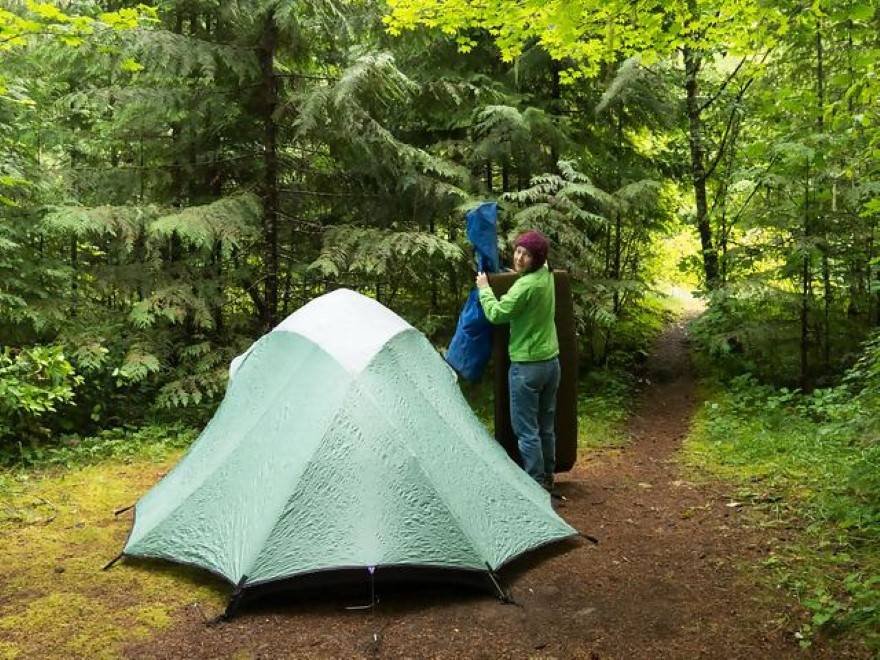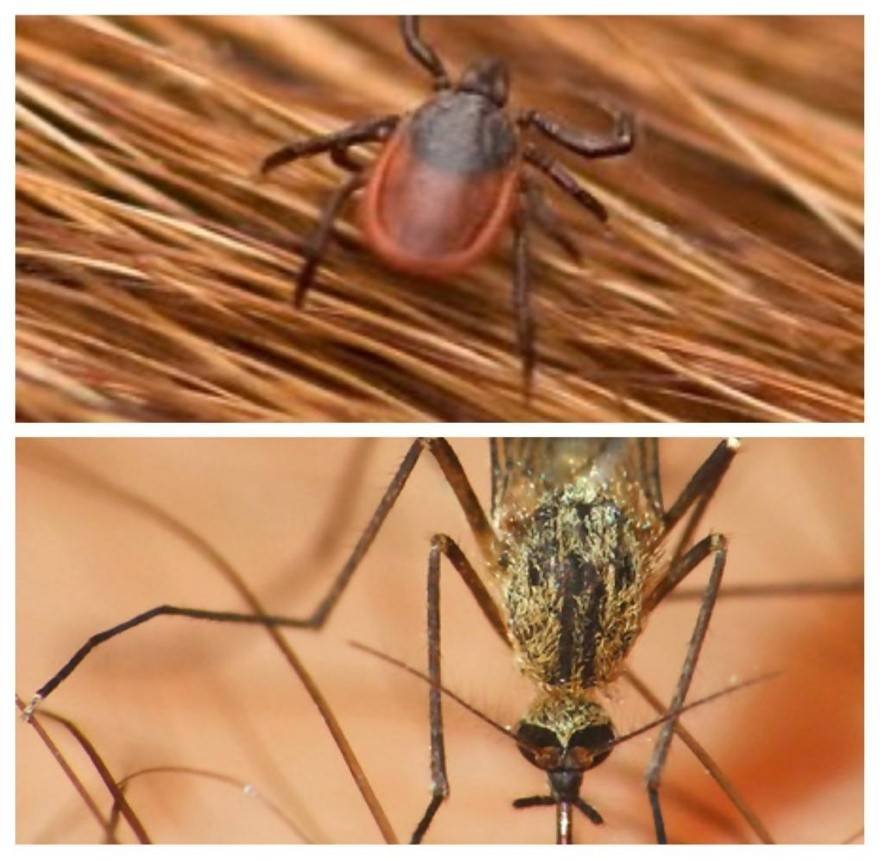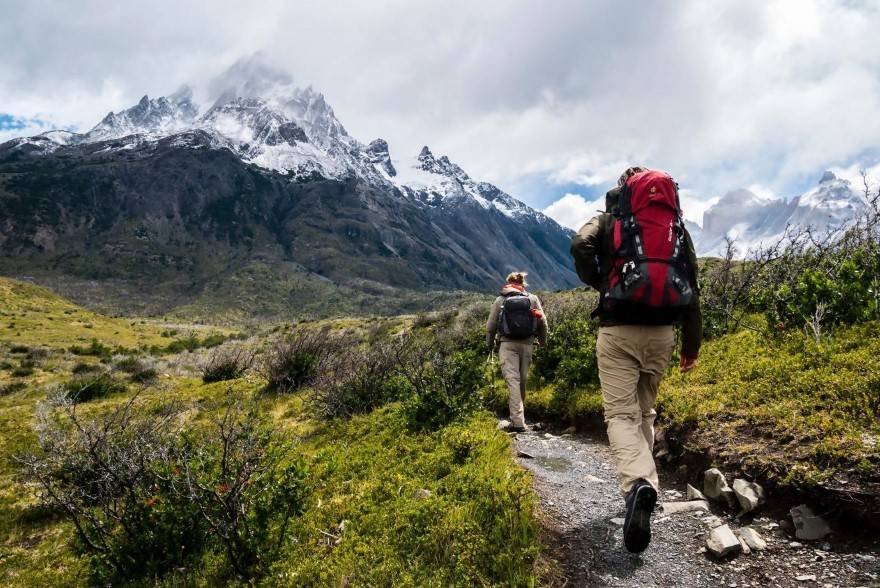Have you heard the story about a camper who went hiking on a nearby campsite trail and got surprised by a sudden cold front/mist/fog/downpour? Everyone knows someone to whom this has happened, and this is the article you should read if you want to make sure it never happens to you.
It’s easy to get hung up on gear equipment choices and pursue things like the latest night vision monoculars or the best weather-resistant tent and so on. Camping clothes are the furthest away from fashion as you can get, yet it’s one of the most essential pieces of the camping puzzle.

Knowing what camping clothes you need to wear is centered around practicality and survival.
What to Remember When Buying Clothes for Camping
The key is to keep comfort and safety in mind. It doesn’t matter if you choose to pack the rattiest sweater in your closet or get the very latest camping attire innovations, as long as they protect your skin from insect bites and UV sun rays - and you won’t break down in tears if they get torn and dirty - anything goes.
Keep in mind that there are numerous ways to get odors out of your clothes, including the infamous campfire smell.
Driving to the Campsite Drop Off: Arrival Outfit
The outfit that you have on when you travel to the drop-off point, will be the clothes you wear for your first hike to the campsite, and also when you set up your tent, collect firewood, suspend your hammock, and the dozens of other camp side chores pitching camp entails.
Keep the necessary post-parking activities in your mind, and put on something comfortable for the drive and hike. Camping clothes have to pull double, sometimes even triple, duty in all seasons. So, you should be wearing a t-shirt for the AC-controlled car you drive in, and a warmer layer for when you get out.
Get reliable information about what the weather is going to be like in the area where you will be camping. Make a judgment based on the location, what is the time of year, and which activities will you be enjoying when you get there.
Never let the trappings of civilization lure you into a false sense of how it’s going to be on the trail. The next few days are going to be non-stop body perspiration, fire ash, smoke, soil, and unwashed hands. If you had planned on sleeping or resting in the clothes you were wearing, you will definitely not want to do that by the time your chores are finished.

The Right Clothes to Wear When You Sleep in Your Tent
One of the most interesting facts about camping and hiking is when it’s time to go to bed, you fall asleep the minute your head hits the pillow. Rule number one about tent sleeping is to never go to bed in wet clothes. Damp insulation means inefficient insulation.
Think ahead, and make sure you opt for a waterproof backpack or carry a rain cover for your backpack with you. This will ensure your spare clothes are always dry. Wet or damp can happen in different ways on the trail:
Drenched by a downpour
Crossing over a river or stream
Sweated into your clothes on a particularly humid day
Even if you think you aren’t damp and feel too tired to change out of a pair of sweaty socks or undervest, do it anyway. By changing into something clean and comfortable, you can completely upgrade your perspective on things and put yourself in a better frame of mind.
You can hang any article of clothing that needs to dry outside to air dry, or inside your tent if it’s raining. Resist the urge to overdress for sleep, especially if you have a state of the art, all-season sleeping bag; you’ll only end up roasting in your juices after warming up the bag. Wearing a beanie cap on colder nights is also a good idea.
It’s easier to add a layer on top of your bag if you get cold, instead of changing what you’re wearing. Think about what you are going to wear the next day, and use that as the extra layer on top of your sleeping bag. It will warm up your outfit for you, and also make it convenient to grab when you wake up.
First Day of Camping: Dress in Layers
This is how to look at your first day of camping: The weather could change multiple times between the time you wake up, and the time you reach your next campsite or return to this one, and you need to be able to adapt to each change. Additionally, your body temperature, the temperature outside, and the amount you will be sweating will be fluctuating too. These are the reasons why you should dress in layers: you can adapt to every situation.
A general rule of thumb is that you’ll be wearing more clothing early in the morning and in the at late afternoon, and then you’ll remove the layers of clothing as the day progresses. It’s easier to do it like this than to stop and unpack, or return to your campsite, whenever you need something warm. The tried and tested way of carrying warm outer clothing layers when hiking is to tie them around your waist or to your backpack.

Be Ready for Any Eventuality
Underwear: Wool is the best material to have near your skin. It absorbs sweat and draws moisture away from your body. Wool also dries fast and doesn’t chafe. There’s a reason why people have been wearing woolen clothes for thousands of years! Silk is a good choice in summer. Stay away from cotton, because you should stick to fabrics that breathe, dry quickly, and support you in all the right places.
Underwear is your base layer, it acts as the barrier between your skin and whatever weather and physical conditions are happening outside. Any natural fiber, down, or even alpaca wool is a great choice for these garments. Don’t disregard synthetics, however, because fleece is perfect for keeping you warm, and not overheating you.
What to Wear for Cold Weather Camping
Wise words of advice when it comes to cold weather camping: cool and dry = good/ cold and wet = bad. When you are dealing with the cold and wet weather conditions, it’s time to talk about the third layer of clothing, also called the shell.
The shell is your physical protection against the elements. You need clothing that will help protect you from snow, wind, and rain. The aim is to keep the heat next to your skin where it belongs and stop it from escaping. The clothes need to stop moisture from getting in, while somehow still allowing the humidity the heat and sweat your body is creating, out.
This means your shell layer has to consist of clothes that are both breathable and waterproof at the same time. These items tend to be at the more expensive side of the camping clothing spectrum, but you can choose to settle for water-resistant instead if price is a problem.
All that matters is your base and insulating clothing layers remain dry, and you aren’t accidentally wetting them with unevaporated sweat.

Protective Camping Clothing: Bugs
There are parts of the world (we’re looking at your Australia) where ticks and flies create huge bug problems when camping. But most of the areas that attract hikers and campers have mosquitoes as the biggest pest problem. Mosquitoes go hunting for blood when the sun goes down, but they can be deterred from singling out your campsite in a few ways.
Mosquito coils burning around the campsite
Portable bug zappers
Tent lanterns/bug zappers combined
Mosquito repellant lotions and sprays
Citronella oil burnt or rubbed onto the skin
Read also: How to Keep Mosquitoes Away While Camping?
If you are heading out to a location where ticks are a known nuisance, keep your arms and legs covered, and don’t forget to tuck your pants into your socks. Tighten, pull shut, and close any opening where a tick could lodge and start making its way towards the skin. Spray tick repellant on your clothes and any exposed skin areas.
Wearing white or light-colored clothes make it easier to see if a tick has dropped onto you. Another anti-tick tip is to always walk in the middle of the trail, and stay away from bushes and tall grass.

Head and Toes
For those campers who forget to pack a bottle of sunblock and a hat, you can make a stop-off on your way to the campsite to buy these essential camping items. Whatever you do, don’t start your trip without giving a lot of thought to what will be on your head and covering your toes. Even in the colder months, it’s still a good idea to wear sunblock, especially at higher altitudes.
Headgear is an important piece of camping clothing. It can be a simple baseball cap or bandana in summer or a beanie/knit hat in winter. It serves the dual purpose of shading your eyes from the glare, stopping the sweat from trickling into your eyes, or keeping your ears warm.
As for your shoes, feet, and toes, the rule is to stick to wearing wool close to your skin, and accept no substitutes. Woolen socks will protect your feet from chafing and sweat build-up, and well as cushioning your feet from possible blisters. Pack an extra pair of shoes, such as purpose-made water-shoes, to wear when you are wading or swimming in water and river banks. You never know where someone has thrown a broken bottle.
If you are taking your dog camping as well, don’t forget to provide them with dog socks if they are going to be walking for extended periods on the trails with you.
When you pack and wear the right clothes for your camping trip, your chances of having an excellent time are guaranteed 100 percent!
